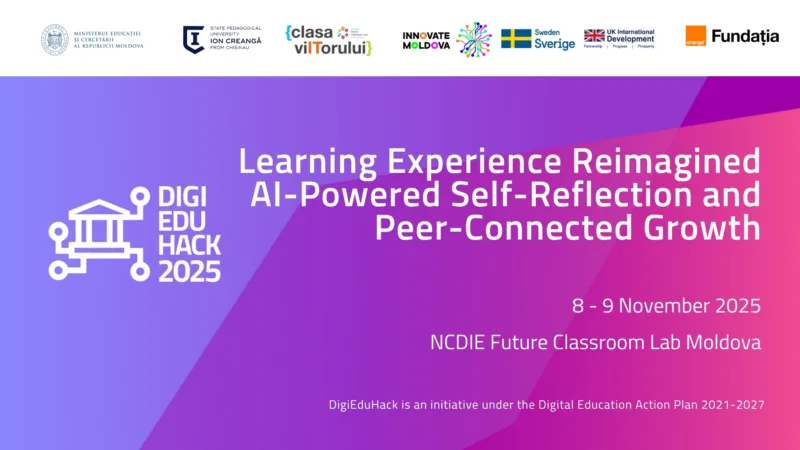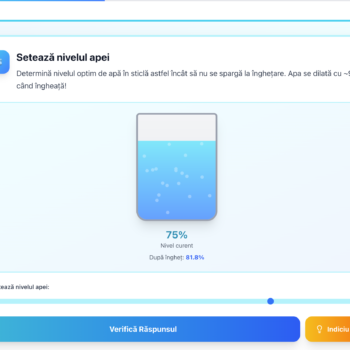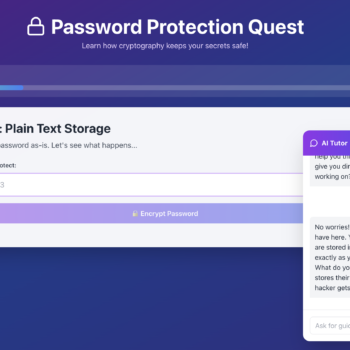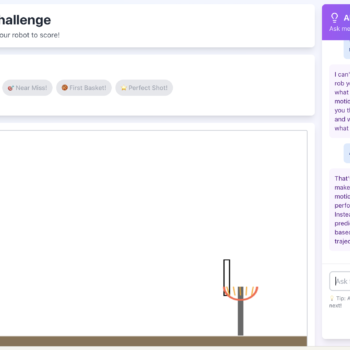LOCAL WINNER
Finalists for Experienced Awards: Social impact and Disruptive technology
MrHelpMe
Solution details
A web app that is focused on learning-by-doing. Each lesson is a simulation of a real-life problem with no "correct" solution(unlike in standardized testing), but with milestones, with a personal AI tutor that guides the learner along the way.
Tweet / Slogan
MrHelpMe — we don't ignore AI; we use it to personalize learning. Standardized tests are the past. The future is in our app, where interactive lessons mirror real-life problems. A passionate student with powerful AI is an unstoppable force!

Context
The main challenge in education that our team identified is the passive use of AI by students, a process that doen't leverage learning. The biggest problem nowadays is that students just copy-paste AI-generated answers. That is mainly caused by the prevalence of standardized testing, where there is either a "right" or "wrong" answer. The student, as a rational being, always chooses the path of least friction, even if the answer was copied from an AI chatbot. Also, a cause for that is the inability of a teacher to assist all of the students all the time. Our solution transforms AI from a “shortcut machine” into a tutor that guides the stuidents on theri ninteractive, guided, step-by-step learning process that promotes active thinking, exploration, and reflection.
Who Benefits?
Target groups: learners, educators, schools.
Benefits:
- Learners develop real understanding through interactive steps, exploratory tasks, and self-paced guidance, without copy-paste outputs.
- Educators gain a system that automates personalized guidance, freeing time while ensuring students still think for themselves.
• Schools benefit from improved learning outcomes and reduced academic dishonesty.
Impact
Our solution shifts students from passive answer-takers to active problem-solvers.
It is measured through:
- reduction in AI-detected plagiarism / copy-paste patterns
- increased completion of reasoning steps
- improved performance on open-ended and creativity-based assessments
- teacher feedback on student independence
This produces deeper understanding and more authentic learning.
Team work
Our team works through clear roles:
educators design the pedagogy and learning pathways(Alina, Serghei)
AI/tech leads build the interactive structure(Mihai, David, Alexandru)
designers create the visual experience in Canva(Maria)
coordinators test modules with students and collect feedback
We collaborate iteratively: educators define problems → designers visualize → AI integrates guidance → pilots inform improvements. This teamwork ensures the solution stays aligned with real classroom needs in the mid and long term.
Innovativeness
Unlike typical AI tools that give direct answers, our solution forces active learning and learning by doing: stepwise exploration, reflection prompts, scaffolded hints, and interactive decision paths. Most tools offer a correct answer; ours structures a learning journey. While there are tutoring apps and online courses with simulations(Phet, Khan Academy, etc) none merge visual presentation, interactive tasks, and AI-driven scaffolding in a format that directly combats copy-paste behavior. This makes the approach original and educationally innovative.
Transferability
The methodology that we developed: real-life problem, guided steps, interactive exploration, reflective prompts, and controlled AI assistance, works across disciplines: math, science, languages, humanities, coding, etc. Our problems focus on interdisciplinarity, since no real-life problem can be solved in just one area. For example, our simulation that prompts students to program a robot to be the best basketball player unites physics, maths, and coding. Any context suffering from passive AI use or teacher overload can adopt the structure. The templates and task formats can be reused for lessons, assessments, projects, and skill-building workshops. The challenge that we identified here so far is the creation of the real-life problems that would be solved in step-by-step solutions. We plan on gathering different problems from differnt teachers, thus creating a larger learning community.
Sustainability
Short-term: pilot the solution in a few classes, refine templates, and collect data on student engagement.
Mid-term: expand to more subjects, train teachers to integrate the method into their lessons, and create a resource bank of interactive modules.
Long-term: develop a scalable platform or plugin that integrates with LMSs, ensuring continuous updates, teacher support, and community-driven content. The model sustains itself by reducing teacher workload and replacing passive AI use with structured, meaningful learning.







